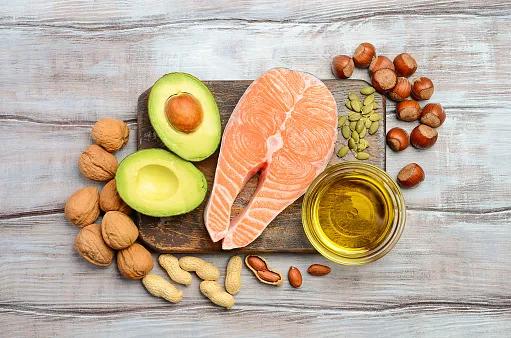How the ketogenic diet works, getting past the 'keto flu'

I never recommend diets I haven’t tried. Since so many patients ask me about the ketogenic diet, I decided to dive into it with both carb-loving feet — for 30 days.
Advertisement
Cleveland Clinic is a non-profit academic medical center. Advertising on our site helps support our mission. We do not endorse non-Cleveland Clinic products or services. Policy
On this diet, 70 to 80% of your calories come from fat, and about 5% come from carbohydrates (that’s around 25 net carbs after subtracting fiber from total carbs). Moderate amounts of protein account for the remaining calories.
The huge drop in carbs left me famished that first week. To limit myself to 25 net carbs, I had to replace traditional carbs with:
Here’s what daily meals typically looked like:
Breakfast: A protein smoothie, or eggs with a side of avocado (taking care with egg whites, which increase protein).
Lunch: A big salad with lots of dressing or avocado, or zucchini noodles with pesto and grilled salmon.
Dinner: Wild salmon with broccoli, kale or spinach (roasted to make up for any missing fat) or hearty mushroom soup (with veggies, cream and butter/bone broth to satisfy/fill me) or grass-fed beef on a low carb wrap with a ton of roasted veggies.
Dessert: Forget it! I tried to skip after-dinner eating, but sometimes enjoyed a no-added-sugar coconut bar.
Snacks: Nuts, dried cheese, jerky or no-added-sugar coconut chips (if I got hungry at midnight, I had 1 tablespoon of olive oil).
Advertisement
As my body moved from relying on a steady supply of glucose to ketosis, or fat-burning, the “keto flu” hit. I felt tired, had wild sugar cravings and was mean to my poor husband. It was a rough start.
Then the clouds lifted. Suddenly, I felt great, no longer irritable or “hangry.” A quick urine check revealed I was well on my way to ketosis.
I thought it would be hardest to consume enough fat and so few carbs. But protein was my greatest challenge. (No wonder coconut oil, egg yolks and bacon are so popular in keto recipes — they’re high in fat but moderate in protein).
Also, as my body transitioned away from a whole-grain and bean-based fiber diet, I developed a bad bout of constipation and had to up my intake of non-starchy vegetables.
It was also hard to stick with the ketogenic diet while traveling, so planning ahead is a must.
Even on tough days, I knew I could give up all sugar and be fine. This felt amazing and empowering. It was one of my top takeaways.
The other surprise was my complete lack of hunger. I knew that fat filled you up. But once the initial shock subsided, my hunger subsided, too.
My calorie consumption was at an all-time high. That’s because, gram for gram, fat calories are more than double the calories of carbohydrate or protein. Yet I lost weight, my clothes fit better, and my belly deflated.
While the short-term effects of the keto diet seem positive for weight loss, some experts advise caution. In fact, this diet ranks No. 39 out of 40 diets reviewed by U.S. News & World Report.
Why? Because medical experts say little is known about the diet’s long-term effects. We don’t know what happens when you eat so much fat and so few carbs over time.
Experts also warn people with liver and kidney conditions to avoid the ketogenic diet. So it’s wise to check with your doctor first.
If your doctor thinks you’ll be OK on the diet, start planning meals that meet the fat, carb and protein guidelines above. Using an app to track snacks and meals can help, as can investing in some ketogenic cookbooks.
I personally haven’t opted to follow the ketogenic diet. But I have taken a few things from it. I’m now eating:
If you get the go-ahead, chances are you’ll be able to lose some weight on the ketogenic diet. Just be patient during that first week. And check in with your doctor periodically to make sure all is well.
Advertisement
By: Kristin Kirkpatrick, MS, RD, LD
Advertisement
Learn more about our editorial process.
Advertisement

Choose foods that are low in fiber and easy to chew and swallow

The flexible eating plan aims to boost your brain health by focusing on plant-based foods and limiting saturated fat

Designed to lower your blood pressure, this eating plan focuses on heart-healthy foods like whole grains, fruits and vegetables

Pescatarians don’t eat poultry, game or red meat, but they do eat fish and seafood, dairy and eggs

This eating style has many health benefits, including weight loss, an improved microbiome, and increased nutrient and mineral consumption

Research shows promising results from options like the DASH diet and Mediterranean diet

Studies show intermittent fasting may help you lose weight, improve blood pressure and more

Some people can safely lose weight on just 1,200 calories — but it’s not right for everyone

Start having sex about 72 hours before ovulation, then at least every other day during your fertile window

Attachment theory suggests that your earliest relationships shape connections throughout your life

It isn’t a recognized mental health disorder, but research shows that problematic social media use can negatively affect your mental health, self-esteem and sleep